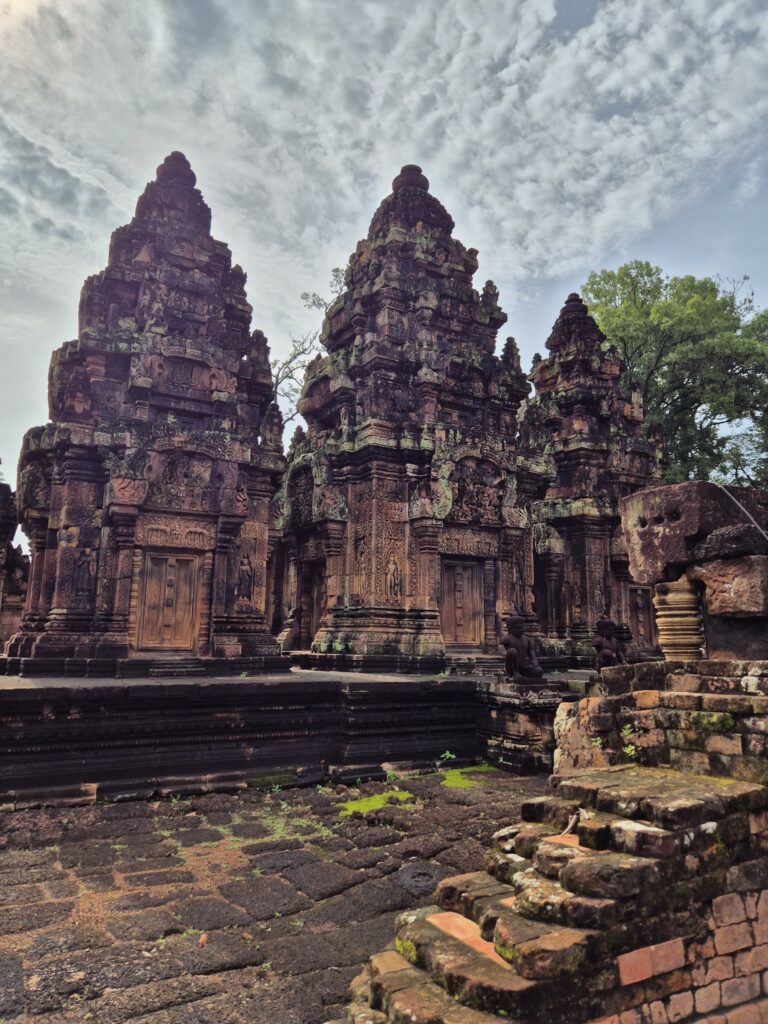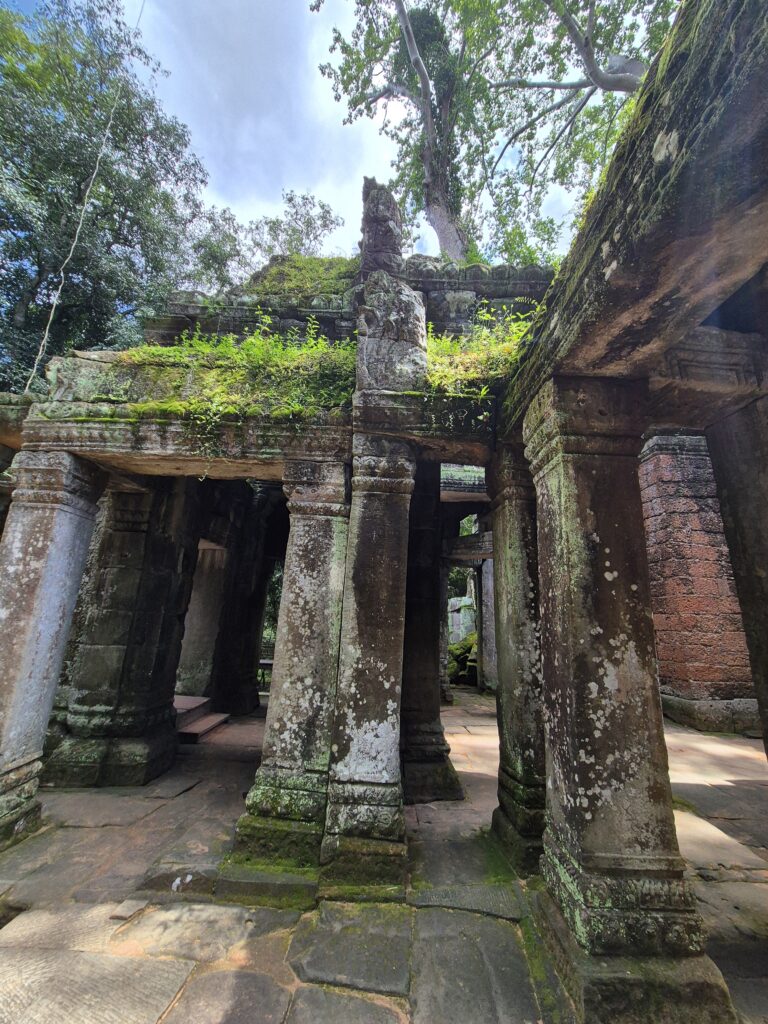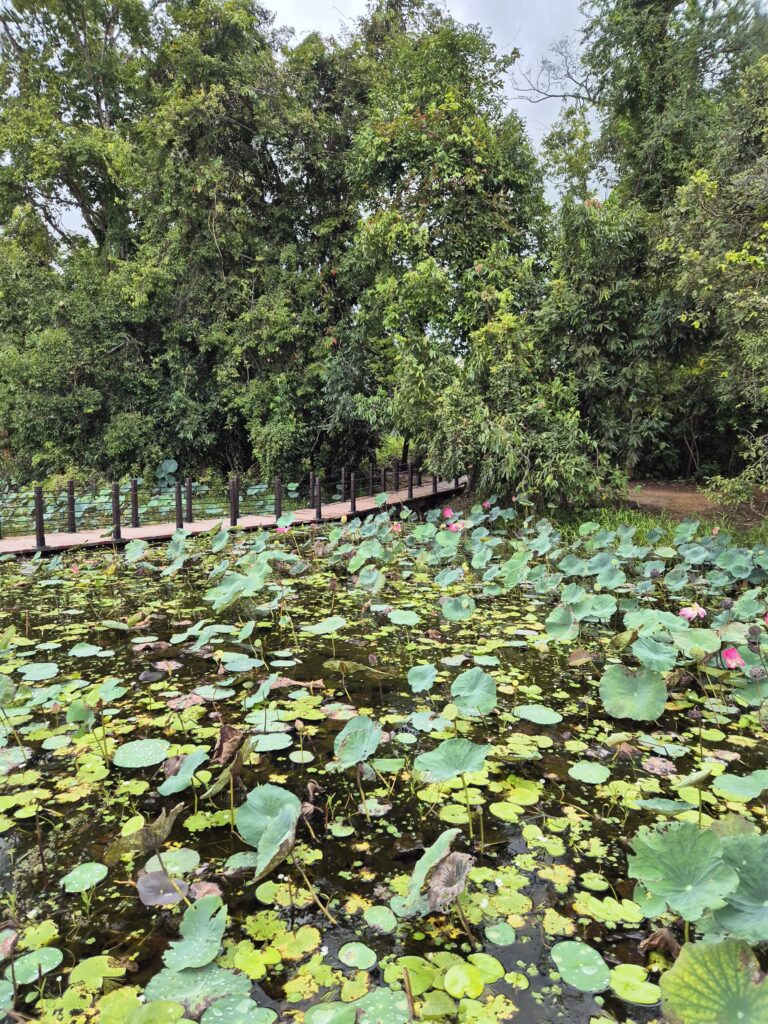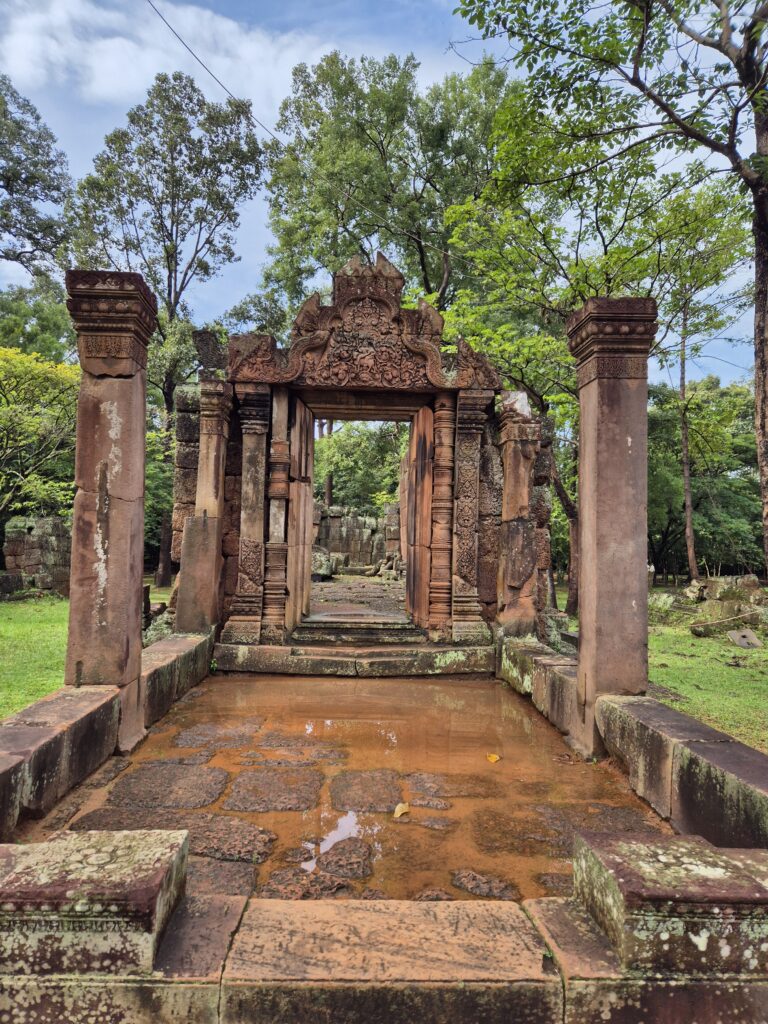Cambodia is a country rich in history, culture, and natural beauty, and no trip here is complete without a visit to Siem Reap. Known as the gateway to the awe-inspiring Angkor Archaeological Park, Siem Reap blends ancient wonders with vibrant modern life. Beyond exploring the iconic Angkor Wat at sunrise, travellers can wander through bustling night markets, sample flavourful Khmer cuisine, and enjoy the city’s lively arts scene. With its mix of sacred temples, welcoming locals, and laid-back charm, Siem Reap offers an unforgettable glimpse into Cambodia’s soul.
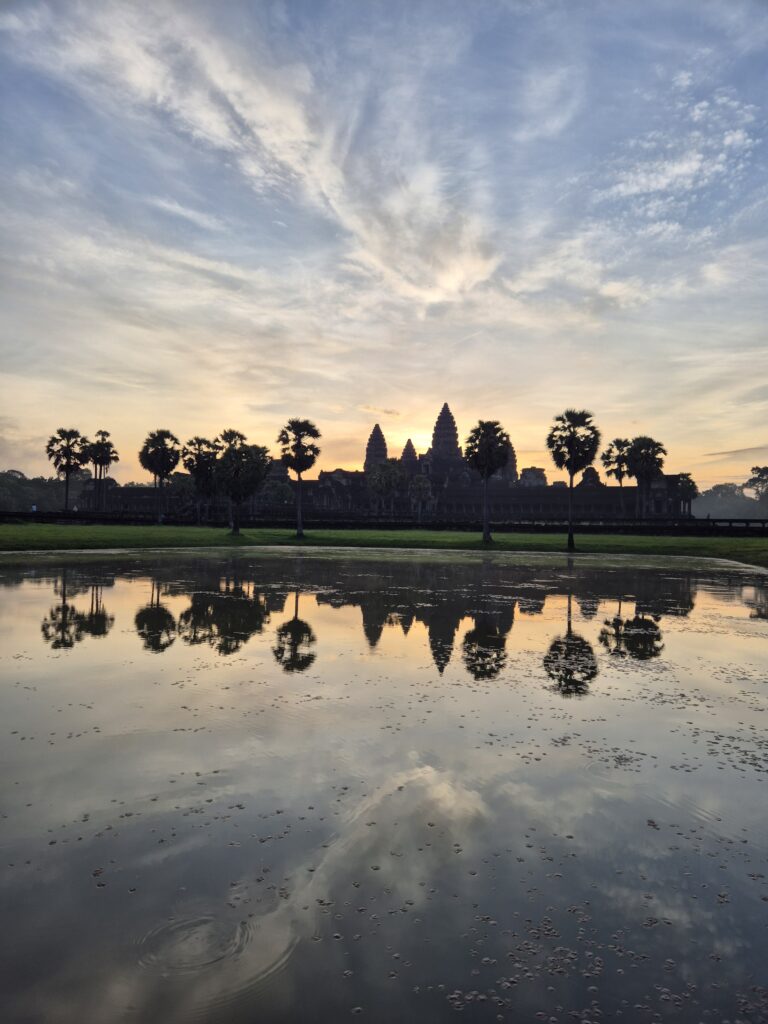
Two perfect days at Angkor – our (very) full Siem Reap trip
We flew to Cambodia from Hoi An as part of our 3 week trip around countries in South East Asia. We had 3 nights in Siem Reap and two days of total temple bliss in Angkor. I’m still vibrating with sandstone dust and sunrise gold. We used a private service called Journey Cambodia for our two-day Angkor adventure and honestly – they were wonderful. This post is a first-person walkthrough of exactly what we did (and why it worked), plus practical prices, travel options, bar and restaurant tips, and hotel suggestions for every budget. If you’re planning a short, intense visit to Angkor and want to squeeze the most out of two days, this is the guide I wish I’d had before we left.
We paid $50 per person and booked the evening before the trip when we arrived in Cambodia. We were haggling the price at 8pm and wanting to start the trip at sunrise the following morning! They picked us up from our hotel at 5am to travel to the main temple; Angkor Wat.
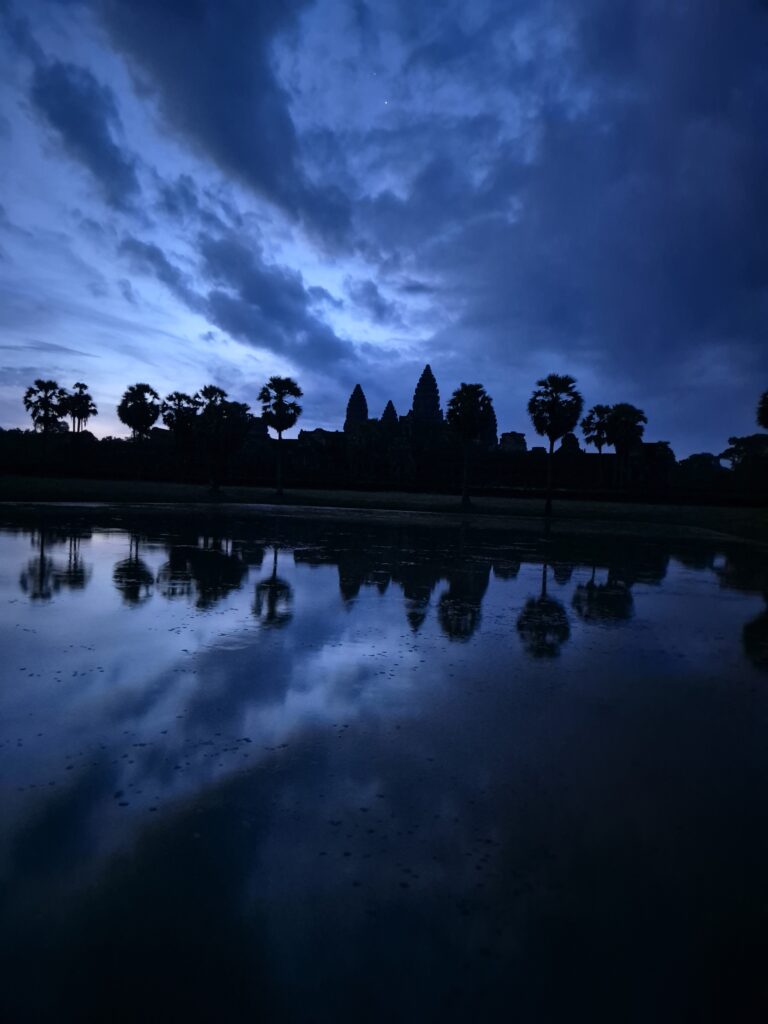
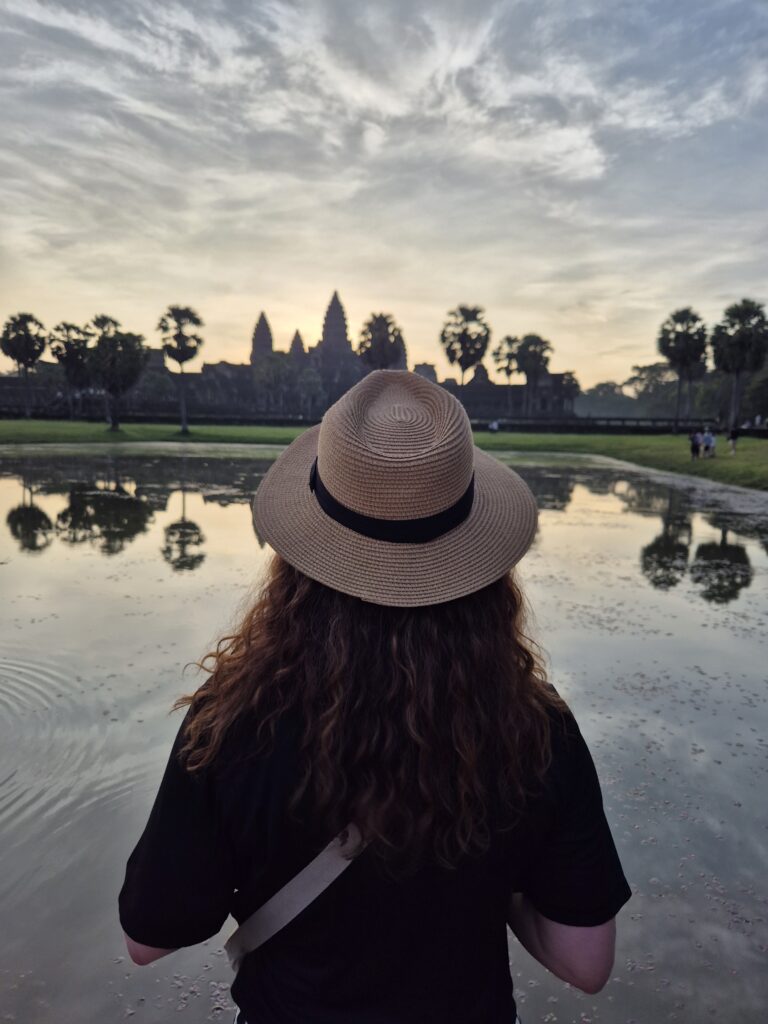
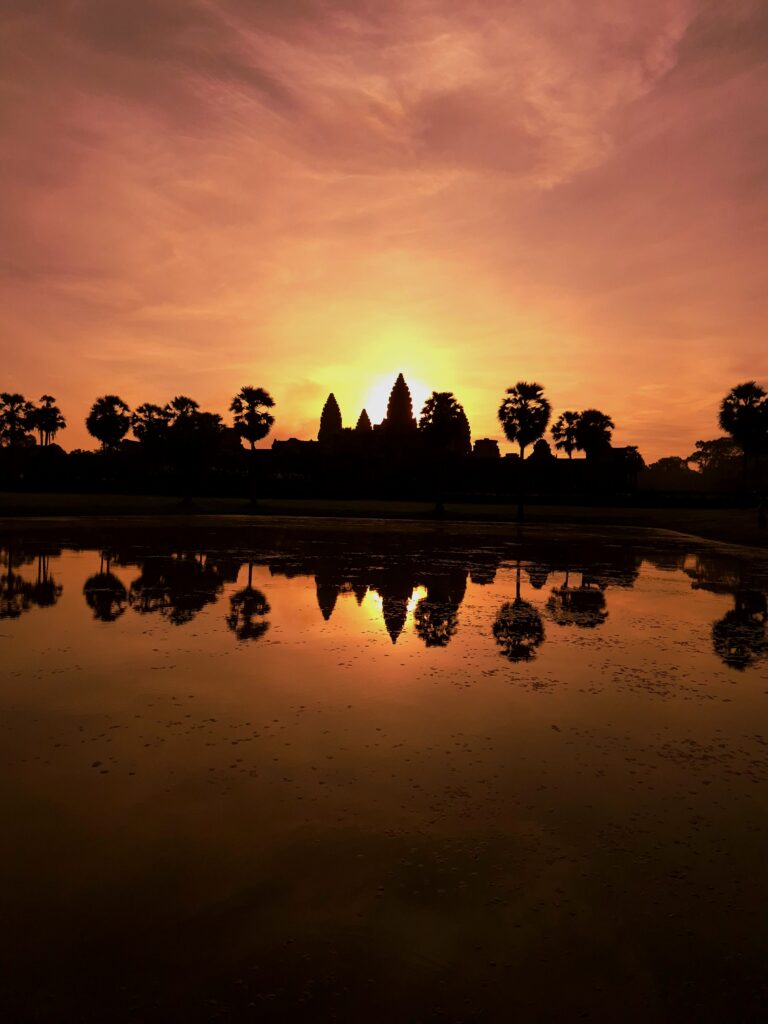
Quick essentials (money & tickets)
- Angkor Archaeological Park passes – the official passes are sold at the Angkor Ticket Office and the standard prices are: US$37 for a 1-day pass; US$62 for a 3-day pass; and US$72 for a 7-day pass. There is no 2-day pass, so most visitors either buy one 1-day pass plus a second day later, or just buy the 3-day pass for flexibility. We bought the 3 day pass as we needed 2 days. Here is the exact official website we purchased from: Official Angkor Pass/Ticket – Angkor Enterprise®
- Currency & payment – US dollars are accepted everywhere in Siem Reap and at the ticket office; carry small bills for tuk-tuk drivers and tips. We didn’t have any Cambodian Riel and got by fine. We used card for restaurants but mainly used USD. The majority of market stalls and small shops quoted USD immediately. 1 USD is worth approximately 4000 KHR as of August 2025.
How we booked and why Journey Cambodia
We booked a private 2-day “sunrise & sunset” Angkor package with Journey Cambodia. They have clearly written private and small-group options and a specific 2-day itinerary that includes sunrise at Angkor Wat, Angkor Thom/Bayon, Ta Prohm and some quieter temples (and hotel pickup/drop-off). Their website lists competitive pricing (they publish budget and private options; some of their day tours start from low figures, and their full packaged 2-day offerings put a typical per-person daily total in the range Journey Cambodia advertises – roughly US$52–$98 per person for a day with transport included, excluding the Angkor pass). We found their staff friendly and reliable. Our guide timed every stop to beat crowds or catch the best light.
If you want independent booking options, many companies and platforms sell similar private two-day Angkor packages, but I can confidently recommend Journey Cambodia based on our trip and the dozens of positive reviews across TripAdvisor.
Getting around the site – tuk-tuk, private car or minivan?
You’ll see three typical approaches:
- Tuk-tuk: iconic and cheap. Expect to pay around US$15–$25 per tuk-tuk per day for a full-day circuit (price varies by season and negotiation). Sunrise pickups often cost a small extra. Tuk-tuks are ideal for couples or solo travellers who don’t mind the bumpy roads and heat.
- Private car (air-con) with driver: more comfortable – especially in high heat or when you’re doing long circuits. A good choice if you want to relax between temples or travel farther (e.g., Beng Mealea, Kulen). Expect roughly US$60–$100+ per day depending on vehicle type. Many tour operators (including Journey Cambodia) include a comfortable vehicle in their private offerings.
- Guided small-group tours: cheaper per person and curated – good if you don’t need private time. These often use minivans. Journey Cambodia runs small-group options as well.
We took a private air-con vehicle via Journey Cambodia (worth it for the early starts and the amount we wanted to see). Our driver waited at every site and the guide managed entrance lines and photography timing – huge stress saver.
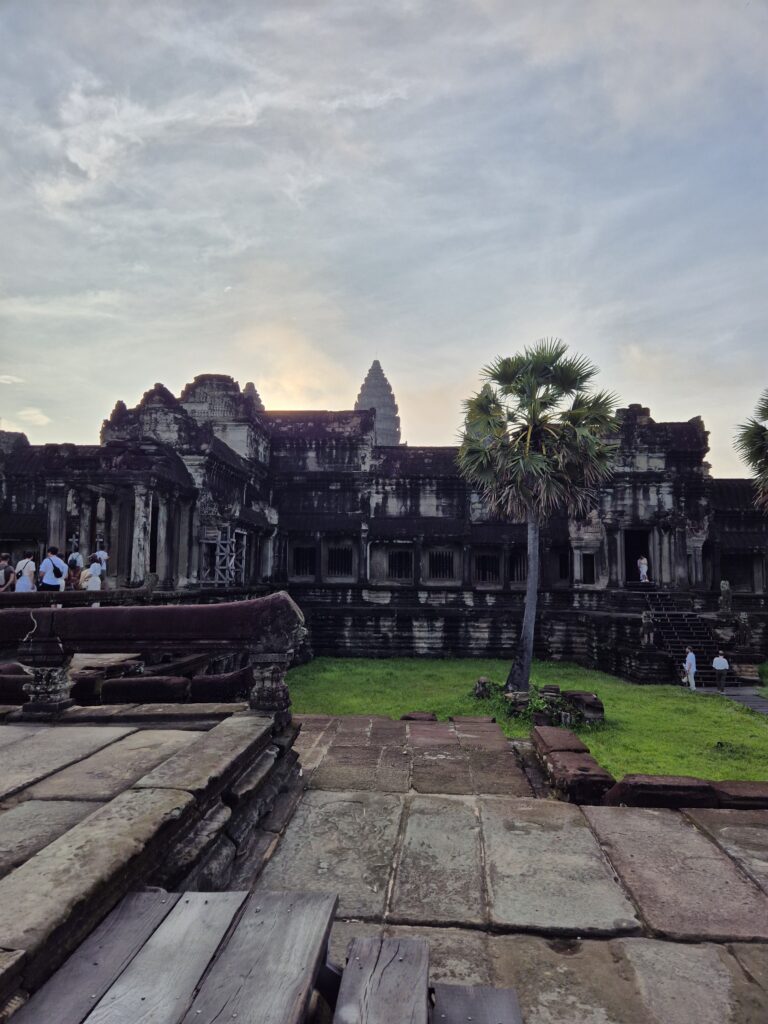
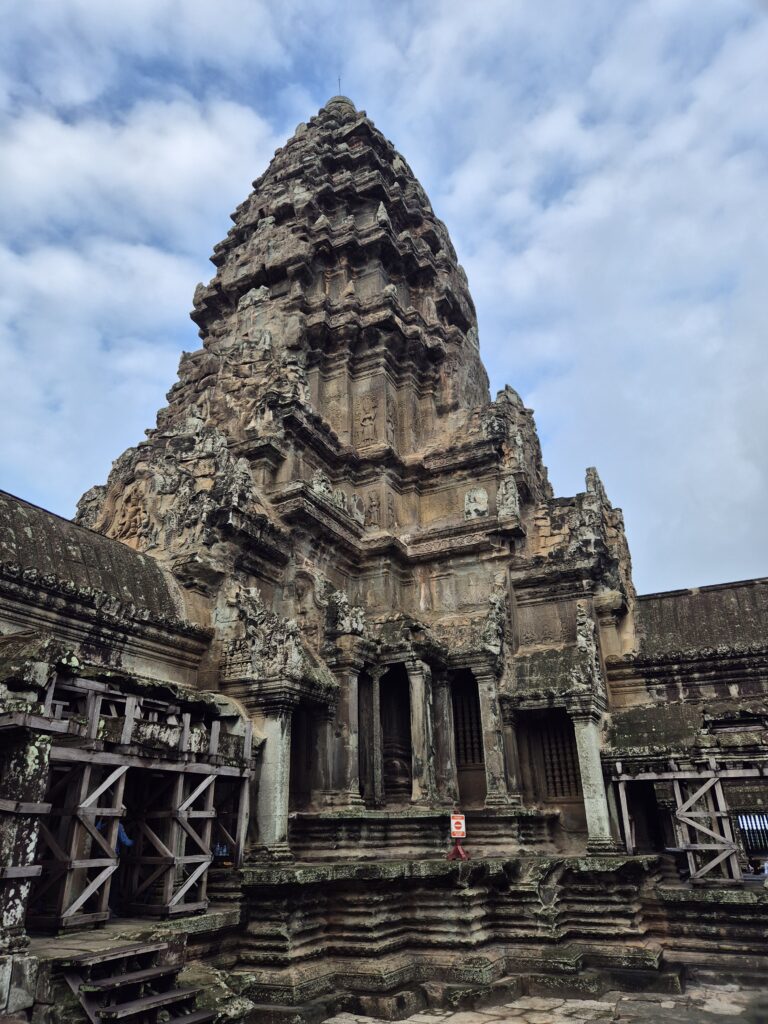
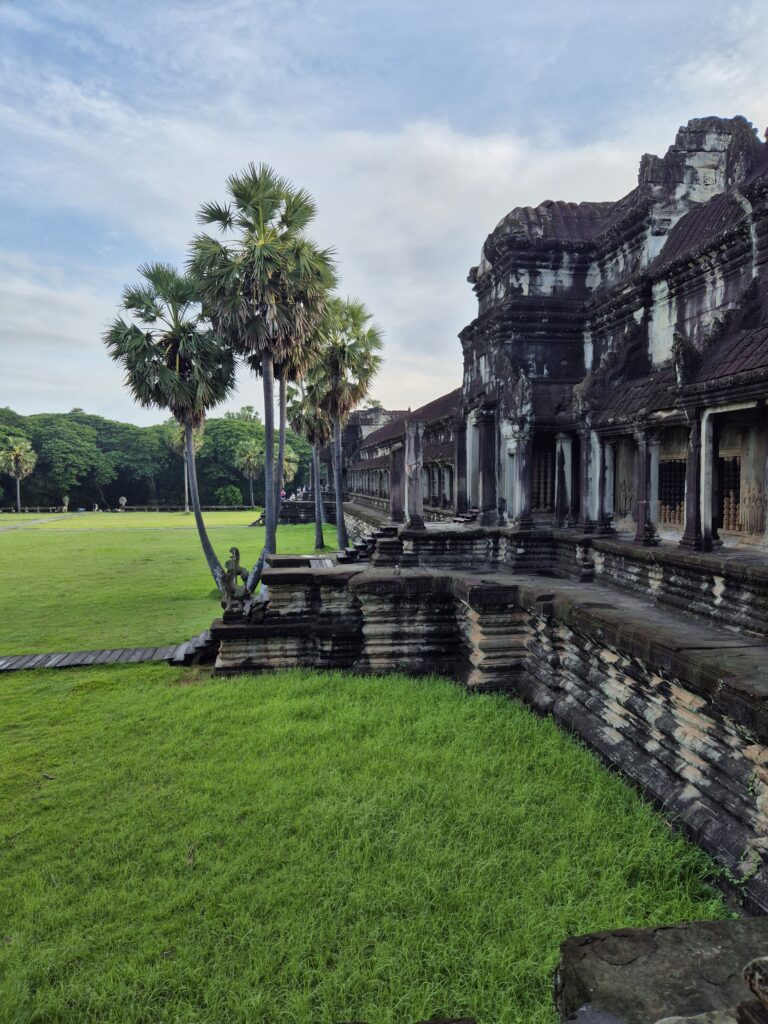
Day 1 – sunrise at Angkor Wat, the “big three” and Ta Prohm (the classic circuit)
4:00–5:15 AM – hotel pickup / drive to Angkor Ticket Office, then the Angkor park gates
If you want sunrise, get ready very early. Our driver picked us up around 4:00 AM from the Koulen (more about the hotel below) and we arrived with time to spare to collect our passes and stake out a spot near the reflection pools. Expect 20–30 minutes from central Siem Reap depending on traffic and hotel location.
5:20 AM – Angkor Wat sunrise
Watching the sun lift behind the five towers of Angkor Wat is the cliché for a reason; the first gold over the causeway is otherworldly. Try to get one of the quieter edges of the main reflection pool (or go to the little-visited eastern entrance and wander the cloisters as light fills the bas-reliefs). After sunrise, go inside to walk the long bas-relief galleries (they’re at their quietest just after dawn). (General sunrise tips & spots: many Siem Reap guides and blogs.)
8:30–11:00 AM – Angkor Thom / Bayon / Terrace of the Elephants
From Angkor Wat we drove to Angkor Thom (the walled city). The crown jewel is Bayon, with its hundreds of smiling faces carved into towers, the carvings are hypnotic and the viewpoints around the terraces are great for photos. The Terrace of the Elephants and the Terrace of the Leper King are nearby and worth a short stop each.
12:00–1:30 PM – Lunch
We had lunch at a small local restaurant recommended by our guide (lots of options by the main gates for a simple noodle or fried rice for around US$4–$8). If you prefer a splurge, some lodges and restaurants near the park offer higher-end fare.
2:30–4:00 PM – Ta Prohm (Tomb Raider temple)
Ta Prohm is the tangled tree-root temple you’ve seen in photos – atmospheric, photogenic and busier than it looks. We moved deliberately through the famous galleries to get the best composition when the afternoon light hit the roots. Note: this temple can be crowded midday; a private guide helps you get shots off the tourist grid.
Late afternoon – unwind / sunset at Pre Rup or Srah Srang
We finished Day 1 watching a quiet sunset from Pre Rup, a steep pyramid temple that gives lovely silhouettes at dusk. It’s less crowded than Phnom Bakheng and the climb is short and rewarding.
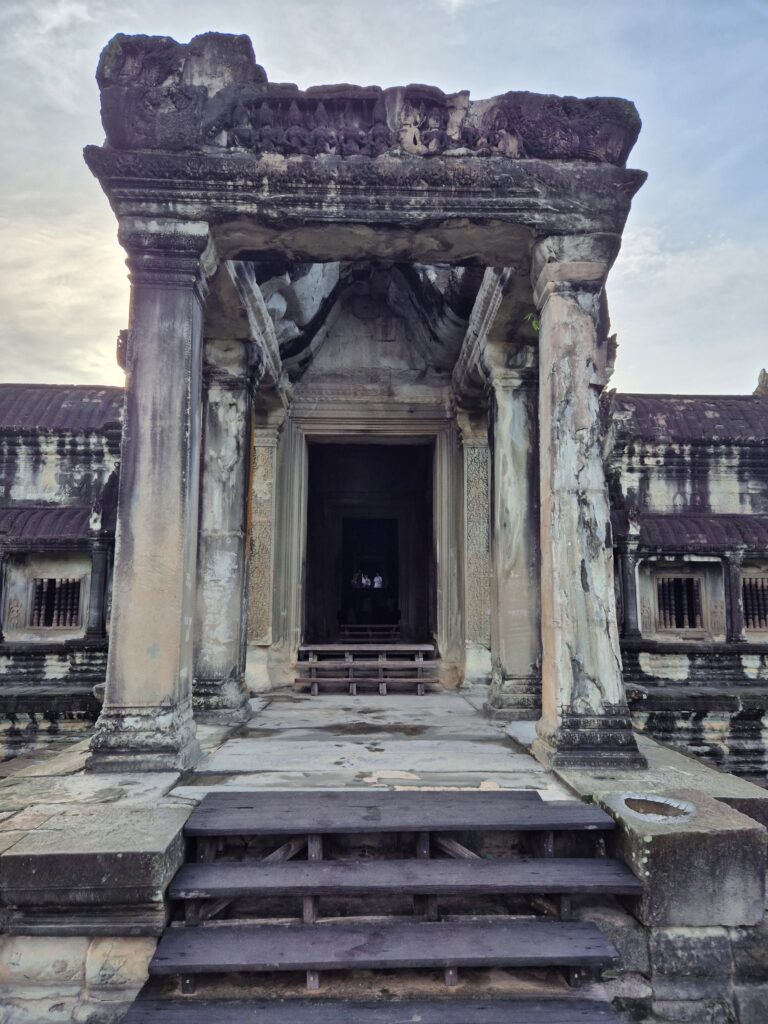
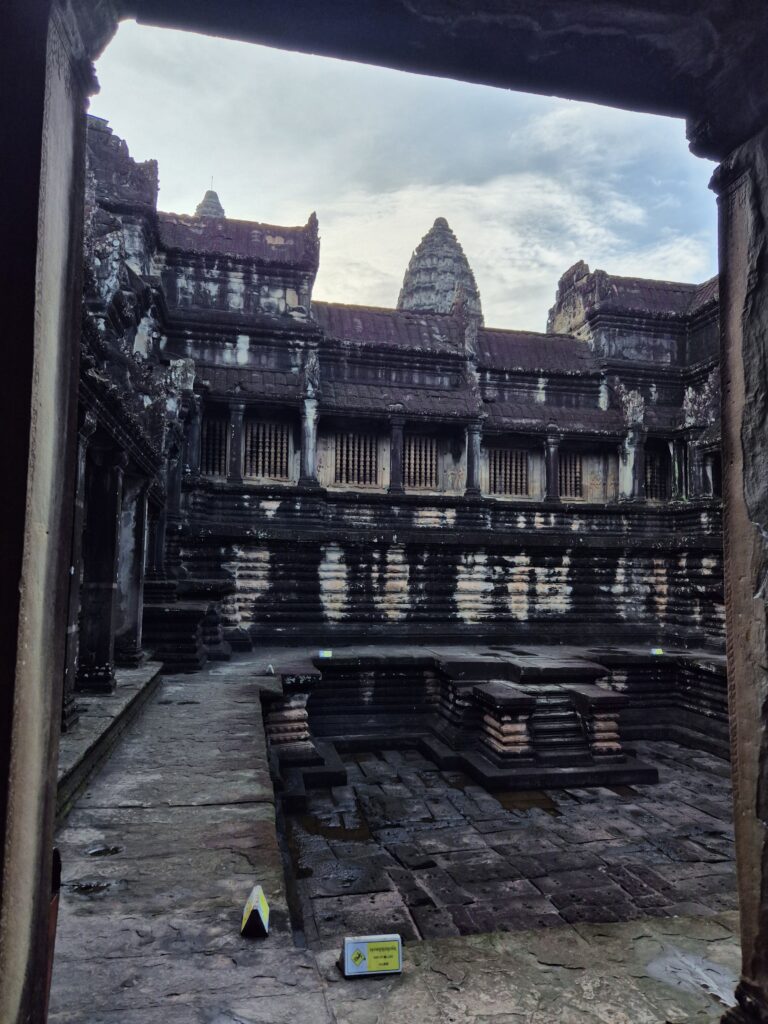
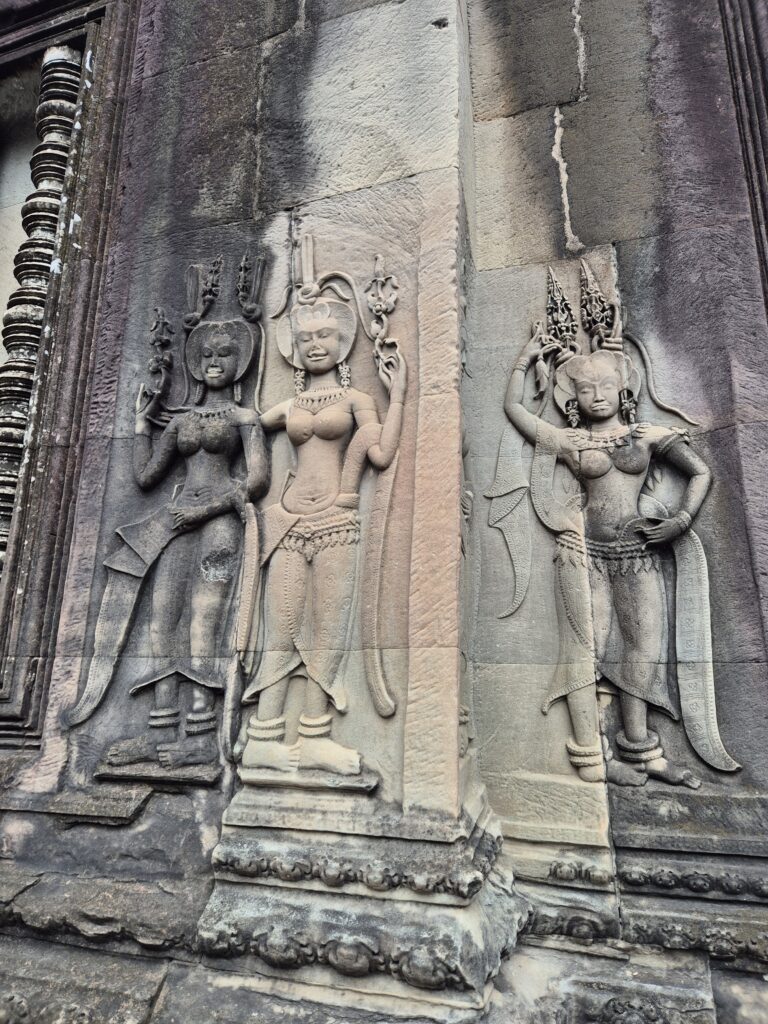
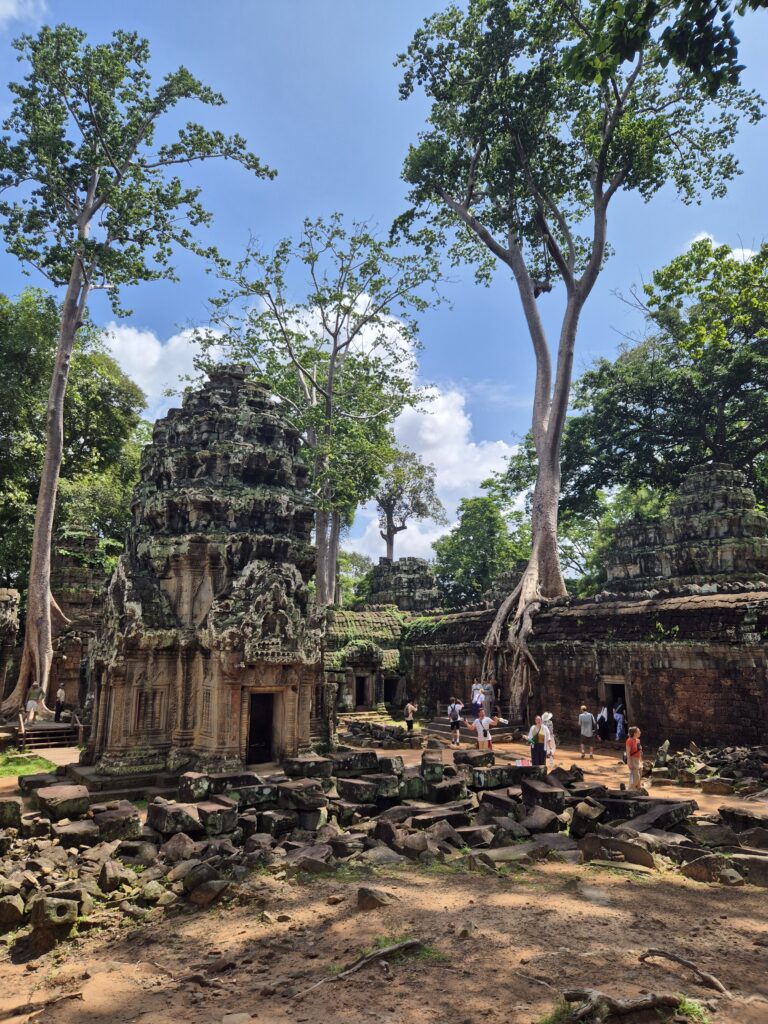
Day 2 – deeper Angkor: Preah Khan, Neak Pean, Banteay Kdei, and a few hidden gems
5:00–6:00 AM – optional second sunrise or slower start
If your body can handle a second sunrise, Angkor Wat again at dawn is wonderfully different; if not, start later and hit the less touristy temples with softer light and fewer people.
7:00–11:00 AM – Preah Khan and Neak Pean
We spent the morning with Preah Khan (an enormous complex with long galleries and a gentle, abandoned feel) and then visited Neak Pean, a tiny island temple that’s compact but fascinating. These sites feel quieter and allow you to linger among carvings and shadowed corridors.
12:00–1:00 PM – Lunch near the park
Our guide picked a shaded restaurant with local Khmer favorites (fish amok is a favorite). Bring water and sunscreen.
1:30–3:30 PM – Ta Nei / Ta Keo / Banteay Kdei
These are quieter, atmospheric sites where you can slow the pace down and explore the artistry without elbowing past crowds. Ta Keo’s raw stonework is dramatic at midday; Banteay Kdei’s open galleries are restful.
4:30–6:00 PM – sunset choice: Phnom Bakheng or another small hill
If you want the classic sunset silhouette over Angkor Wat, Phnom Bakheng is the place – but it gets very busy (arrive early). We chose Pre Rup on Day 1 to avoid the worst of the crowds; Day 2 we relaxed into a final temple soak and drove back to town. (If you prefer less crowd and a cooler pick, ask your guide for their secret sunset hill.)
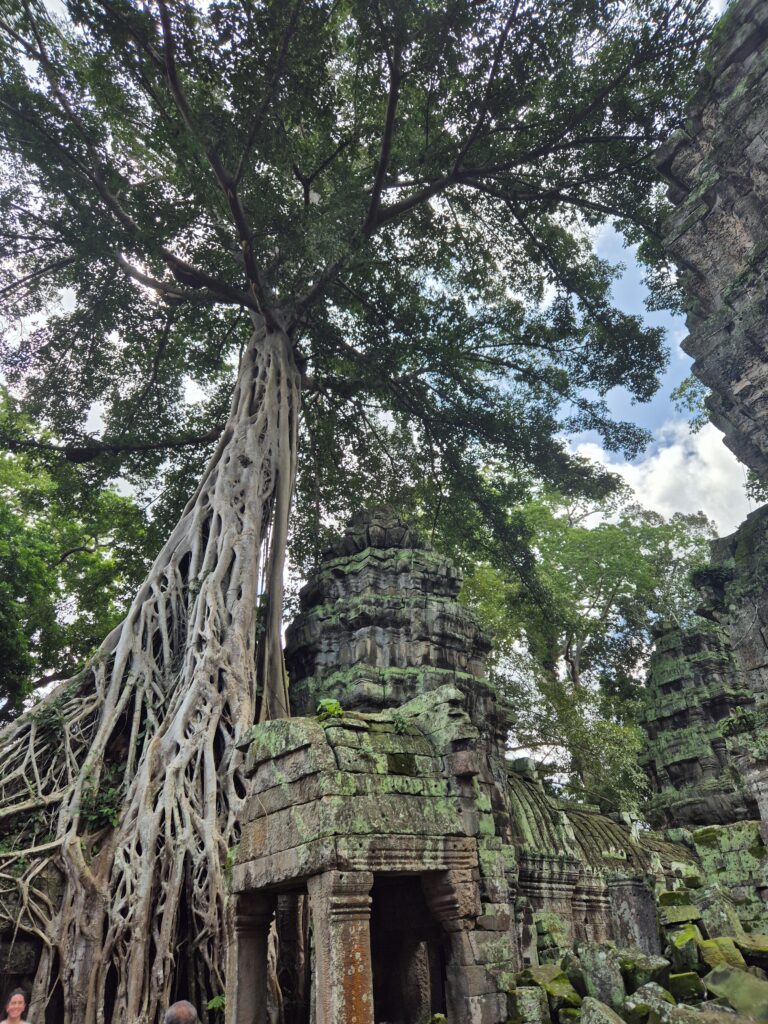
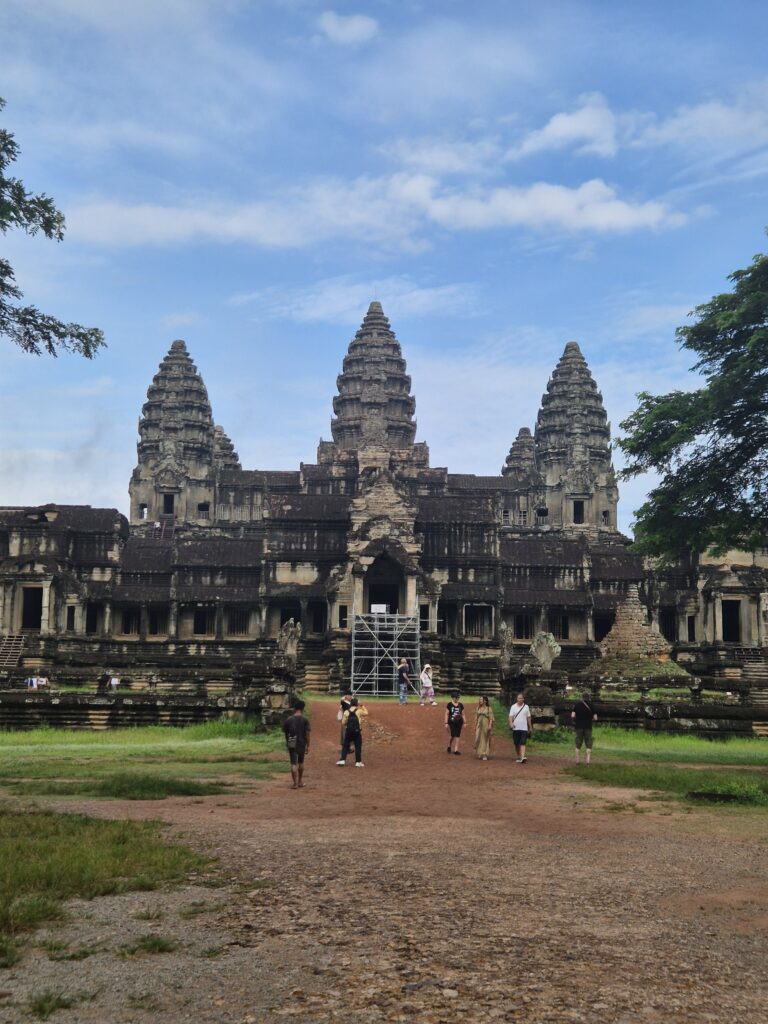
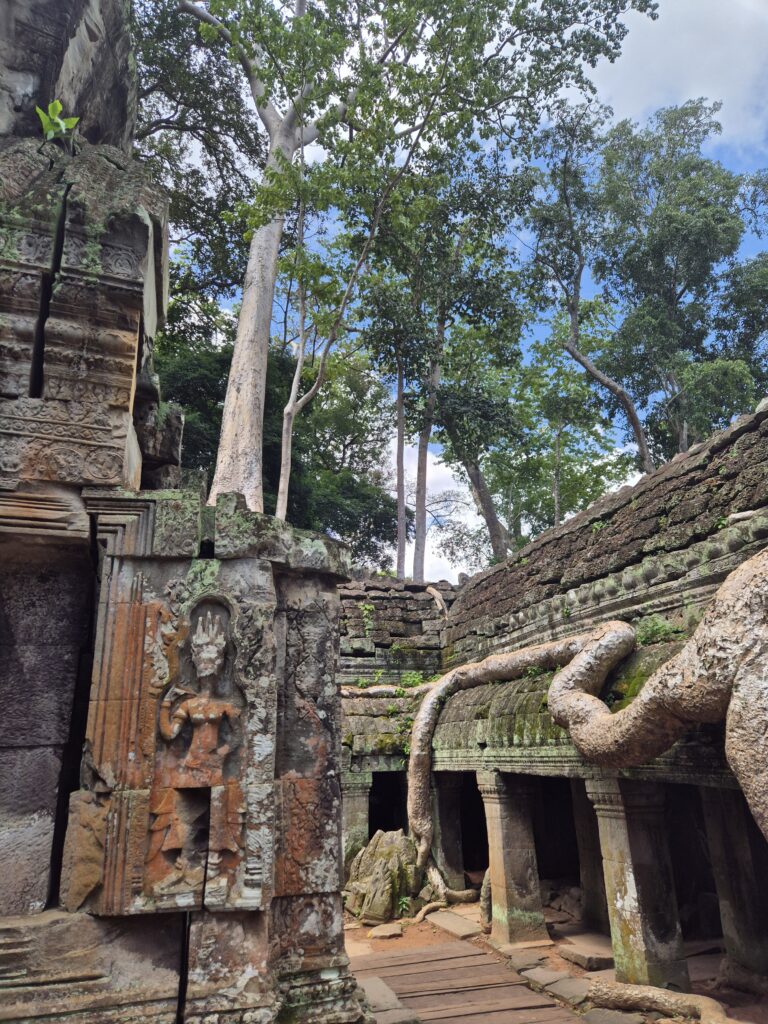
Where to stay – luxury, mid and budget picks
We stayed at The Koulen (Koulen Hotel / Koulen Resort) and it was perfect for our needs: comfortable rooms, helpful staff, and quick access to Pub Street – a great base after long temple days. Despite being a 5* hotel, it was very affordable.
More options to consider:
- Luxury: Raffles Grand Hotel d’Angkor or Park Hyatt Siem Reap – classic, top-end properties with big-service amenities. Expect US$300–$600/night depending on season and room. The Raffles is a historic “grand dame” in town.
- Upper-mid / boutique: FCC Angkor by Avani – beautiful location by the river, a stylish bar, and excellent service; rooms commonly range US$120–$250/night depending on season. The FCC is also known for arranging temple pickups and upscale dining.
- Budget / comfortable: Koulen Hotel (where we stayed) and many guesthouses near Pub Street and the Old Market offer clean double rooms for US$30–$70/night. If you’re on a backpacker budget, guesthouses and hostels in the area are plentiful.
Tip: Many hotels provide tuk-tuk or private-car bookings and will arrange an early pickup for sunrise tours (a very convenient option).

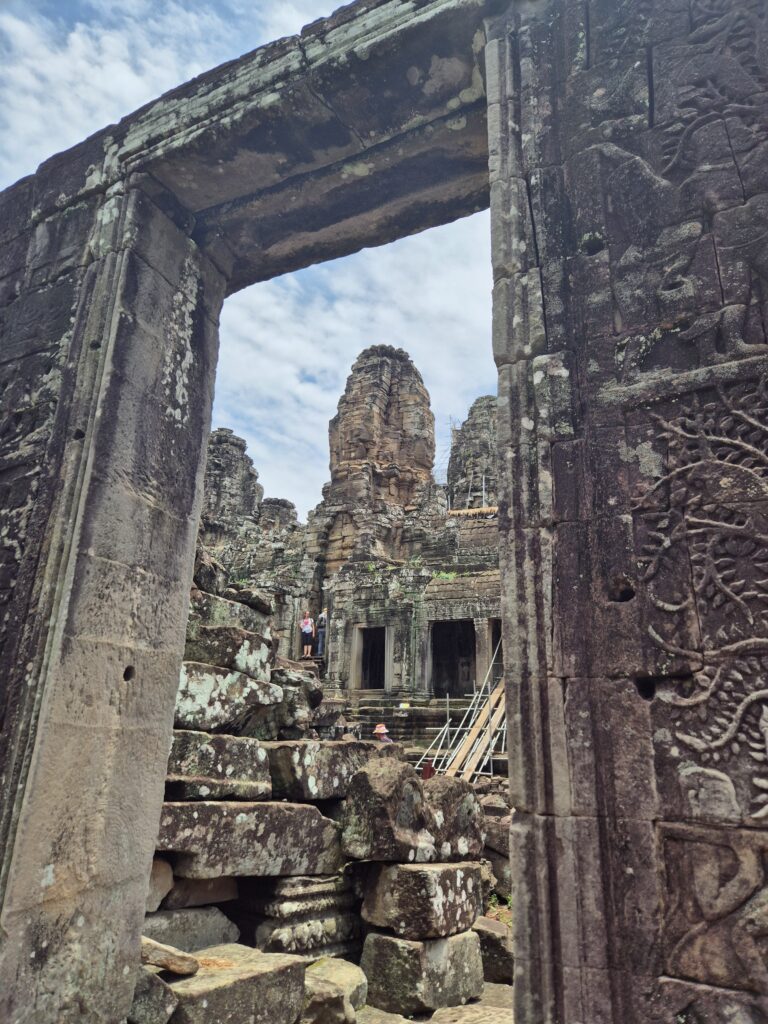
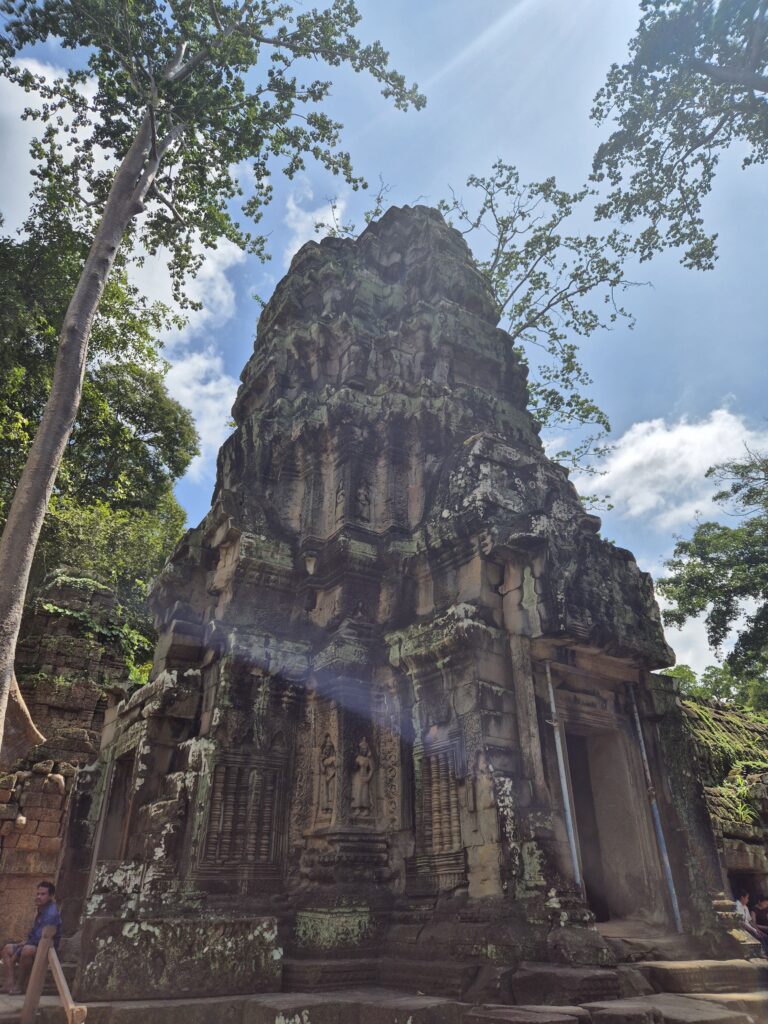
Eating & drinking – where we fell in love
Siem Reap’s dining scene is surprisingly varied, from street stalls to world-class tasting menus.
- Chanrey Tree – Chanrey Tree is committed to preserving authentic Cambodian flavours, featuring traditional countryside recipes curated from home kitchens and rural markets, then elevated with premium ingredients and creative presentation.
- Marum – a training restaurant run by a social enterprise. It’s delicious, ethical and great value, we loved the fresh Khmer flavors and the mission behind the kitchen. Expect modest prices.
- The Sugar Palm – a popular place for Cambodian classics. It provides great local dishes in a polished setting.
- Scribe / FCC bar – for cocktails and riverside atmosphere, the FCC bars are lovely (we went there for a post-temple beer and live music). It’s a nice treat after dusty temple exploring.
For quick lunches near the park we often took our guide’s recommendations for noodle soup or rice dishes – cheap, fresh and fast (US$3–$8).
Practical tips we learned
- Respect dress codes at the temples: shoulders and knees covered for entry in certain areas. Bring a light scarf or sarong for warmth and coverage in the morning (it can be surprisingly cool before dawn). We dressed in t-shirts and long skirts/trousers rather than bringing something extra to put on. This was fine despite the heat as we were in and out of the air-conditioned van with cold water and cold flannels.
- Water, sunscreen, and shoes: carry at least 2L water per person, wear good walking shoes (some temple surfaces are uneven), and reapply sunscreen- shade is limited.
- Beat the crowds: Sunrise at Angkor Wat is worth the early start; for other temples, mid-afternoon is often quieter as tour groups head back to town.
- Tip politely: drivers and guides often work for modest daily wages – a small tip is much appreciated for early pickups and for holding a cool towel after mid-day heat.
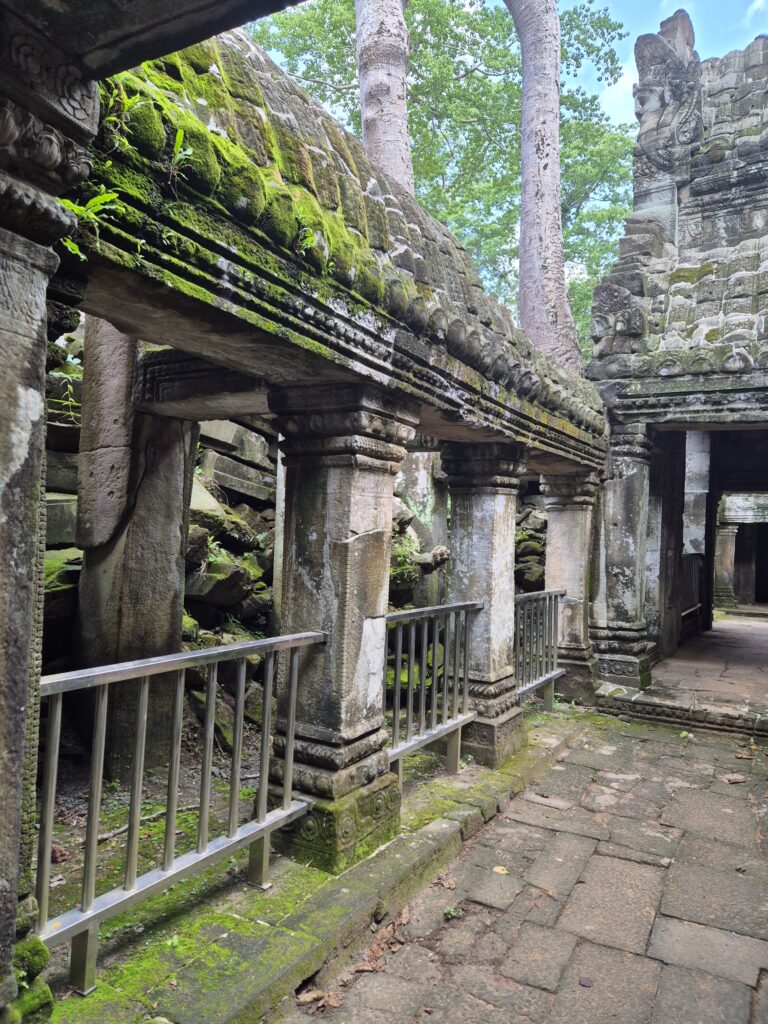
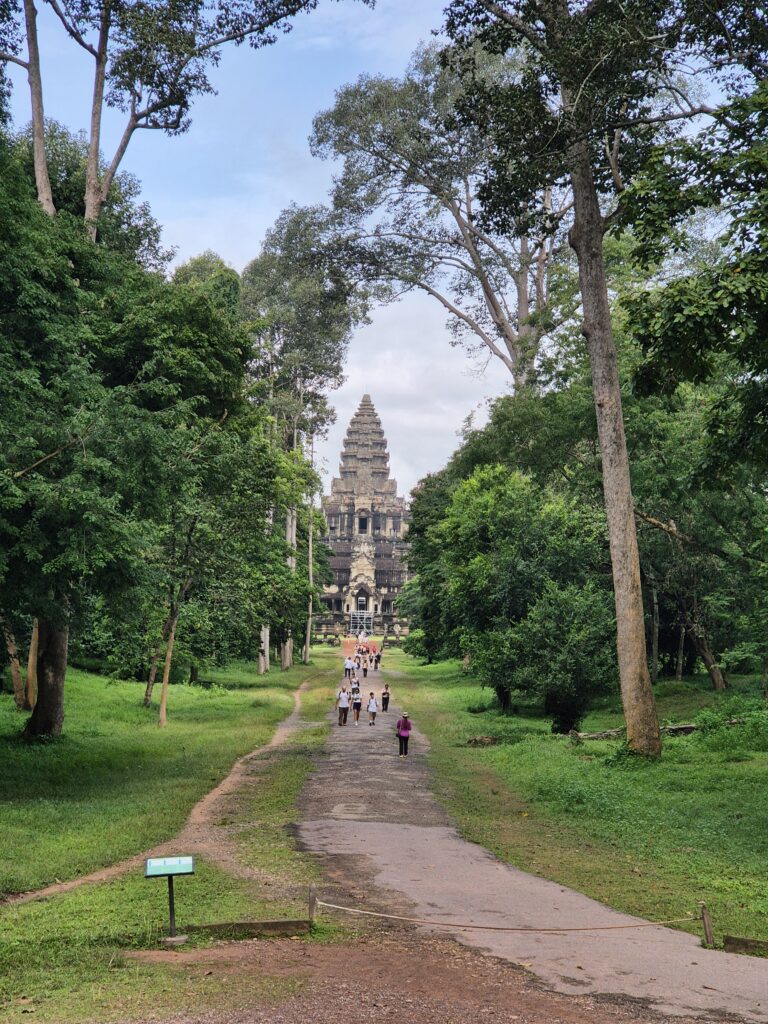
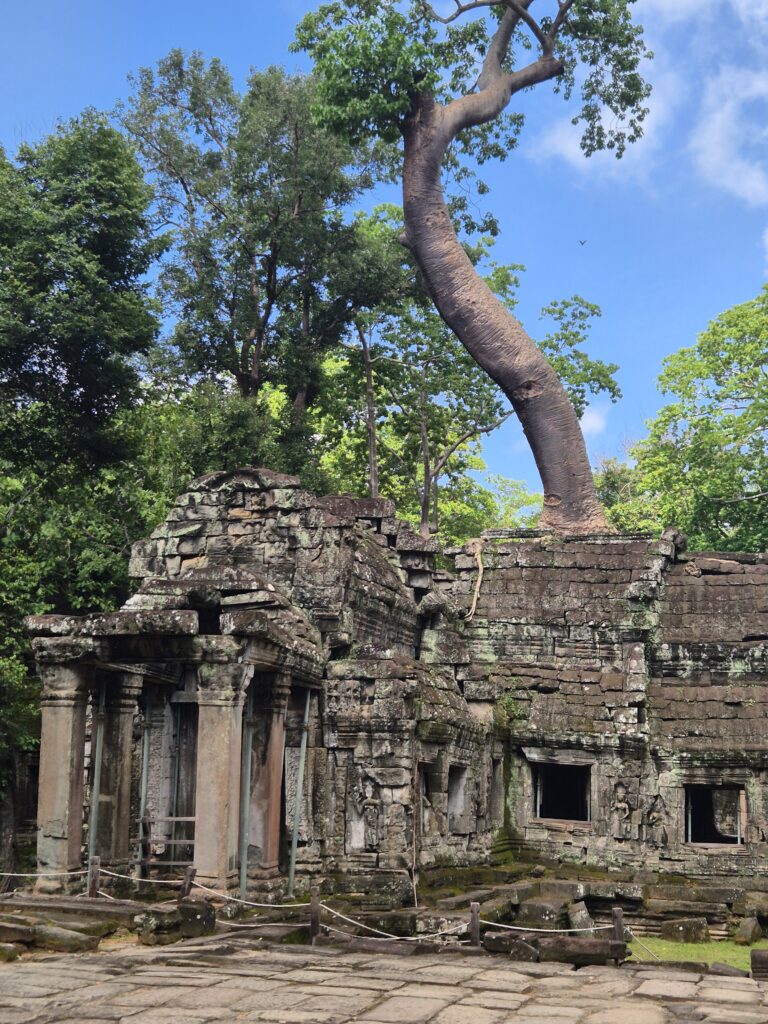
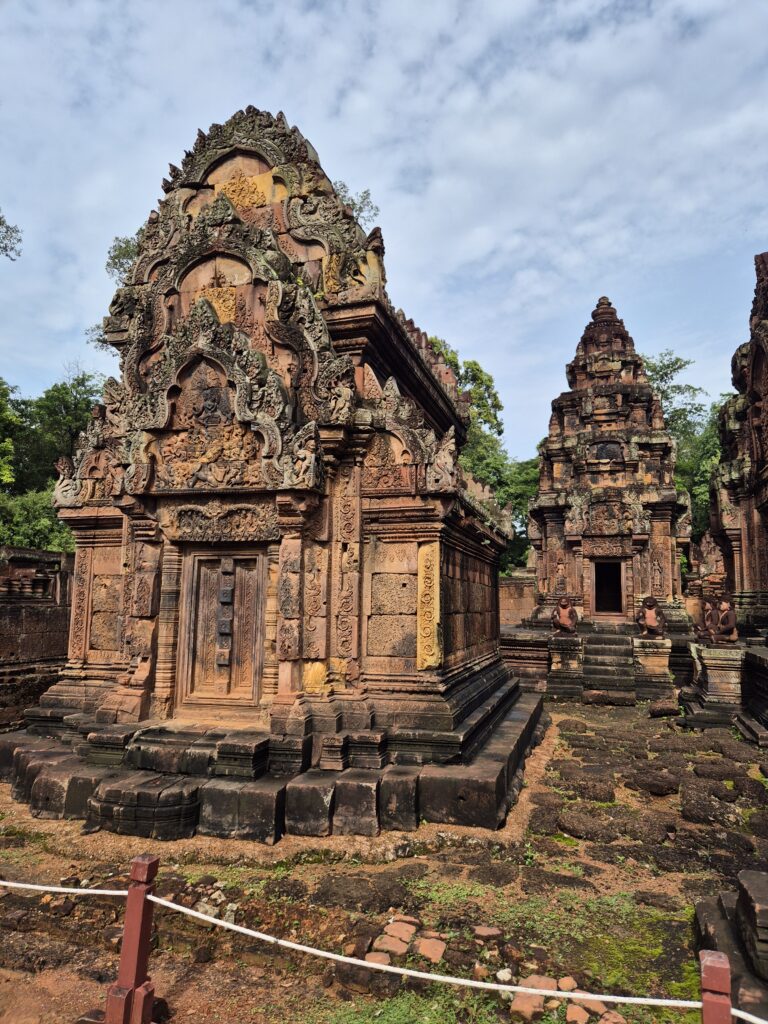
Two days at Angkor is a sprint, but with a good private guide and a driver who knows the park (our Journey Cambodia team did both), you can see the great classics and also enjoy quieter, less photographed corners. We left feeling like we’d done justice to the place without collapsing into exhaustion and we still had energy for one great dinner and a beer on Pub Street each night.
If you’ve only got 48 hours, do the sunrise at Angkor Wat, spend the first day on the big circuit (Bayon, Angkor Thom, Ta Prohm) and the second day on the quieter temples (Preah Khan, Neak Pean, Ta Keo, Pre Rup) with a comfortable vehicle to shuttle you between sites. Buy either a 1-day pass twice or (simpler) a 3-day pass if you want the flexibility, and consider a private operator like Journey Cambodia to make the most of your time.
